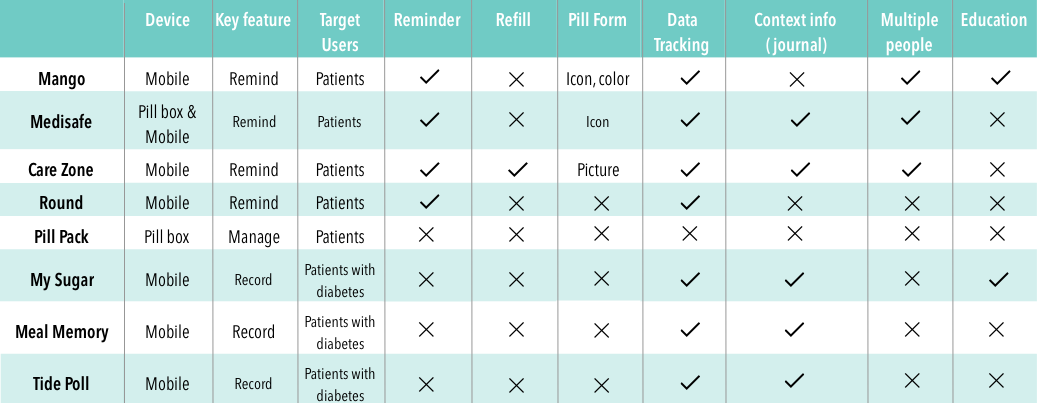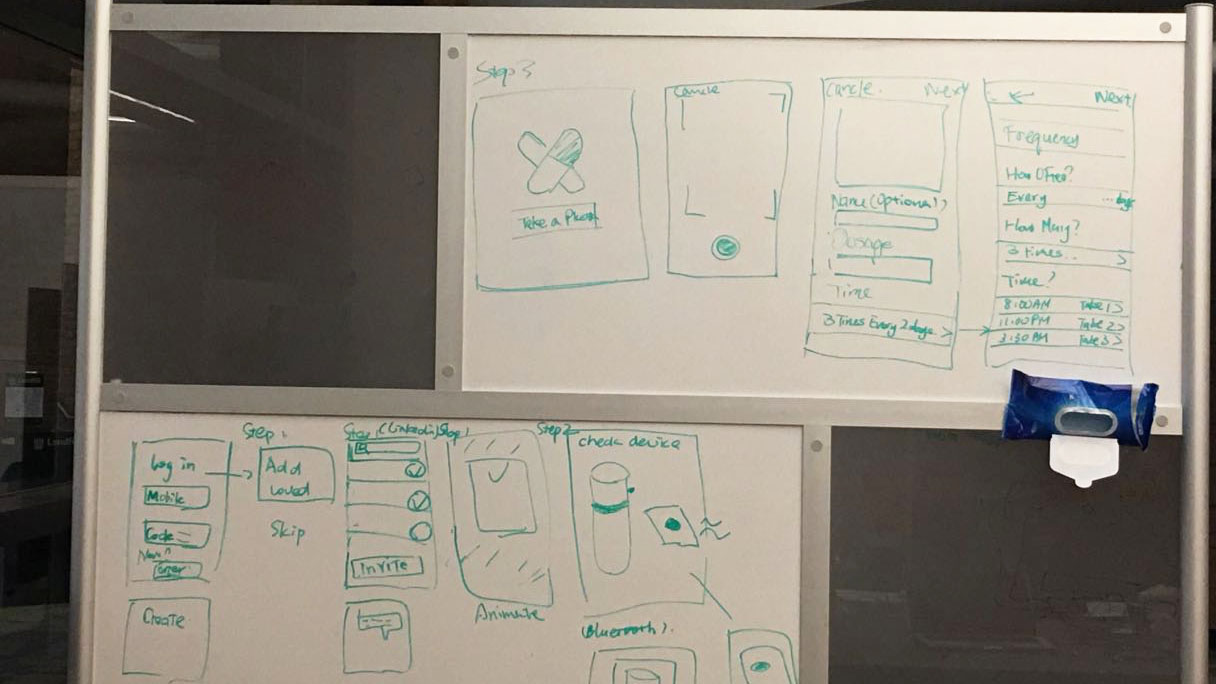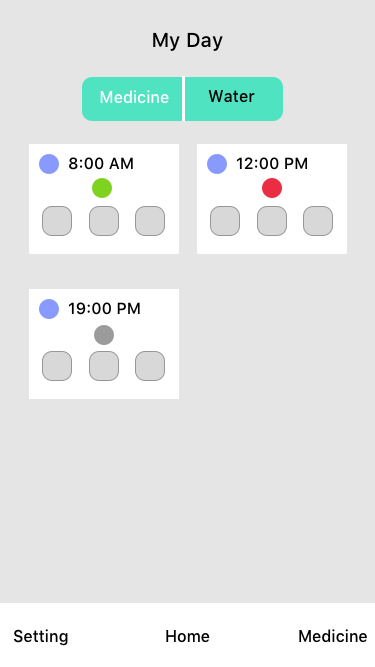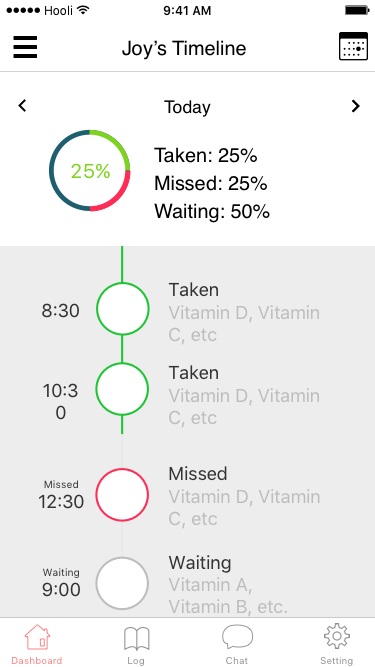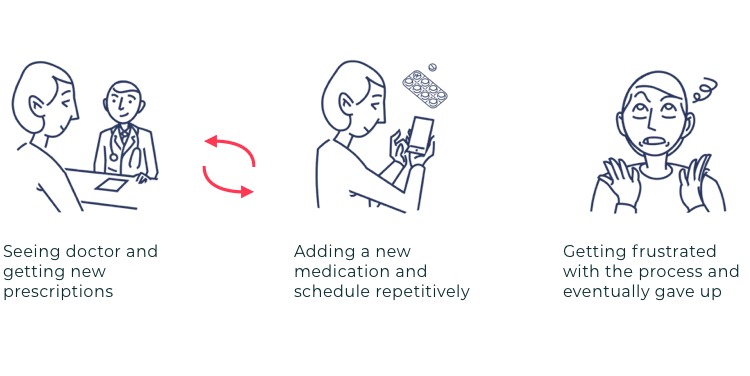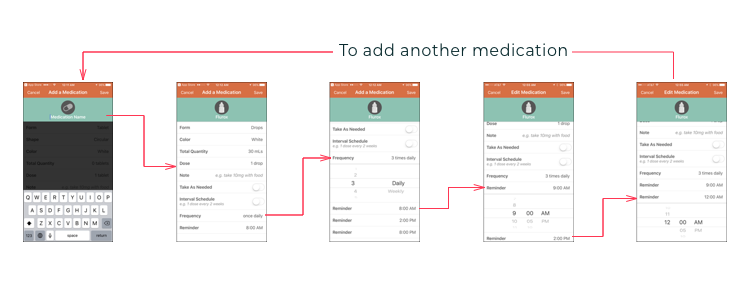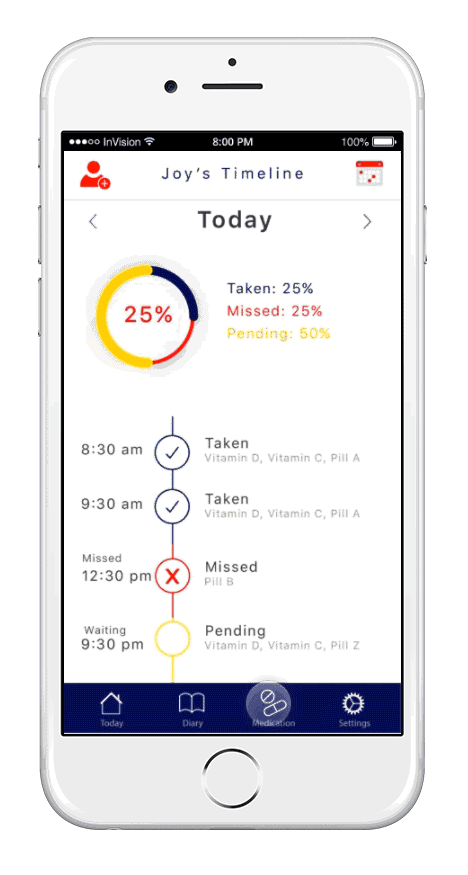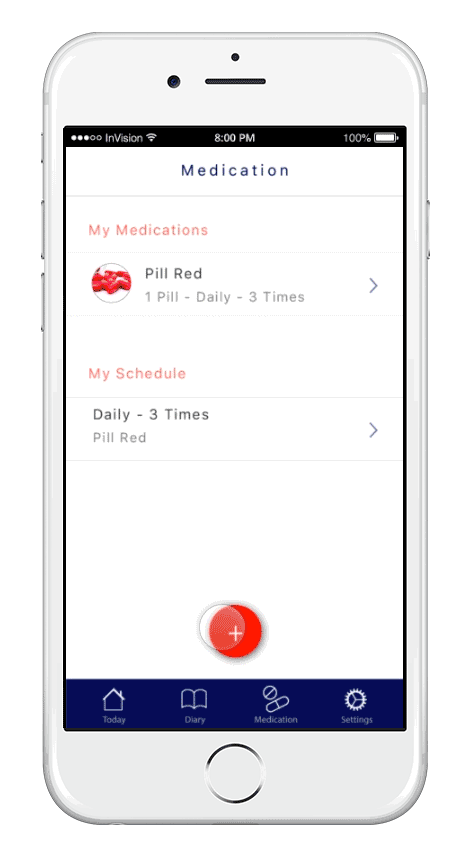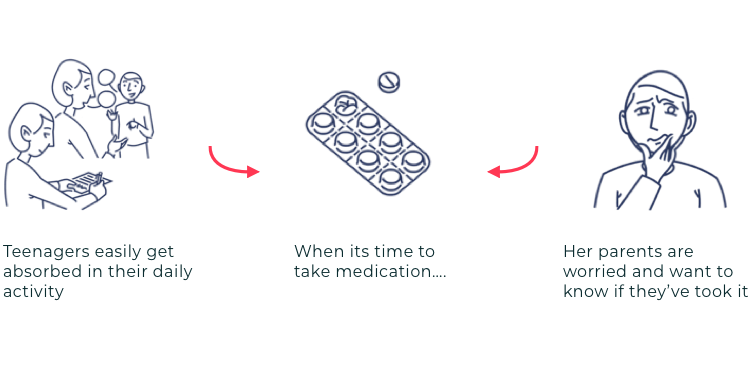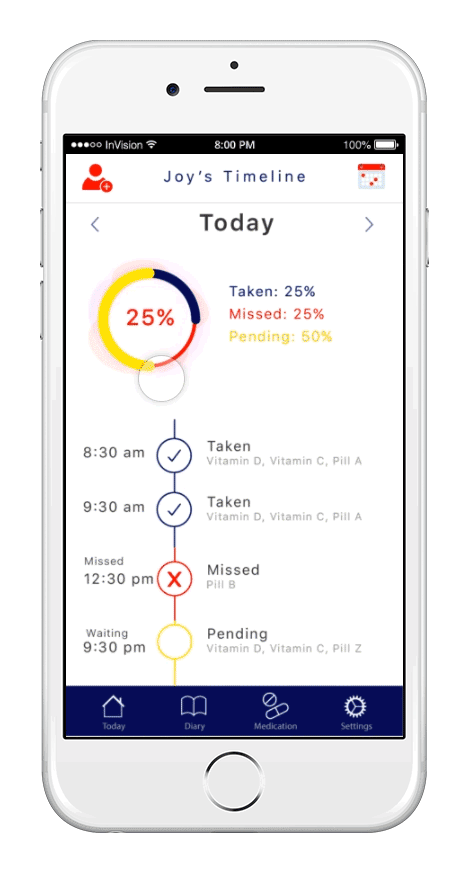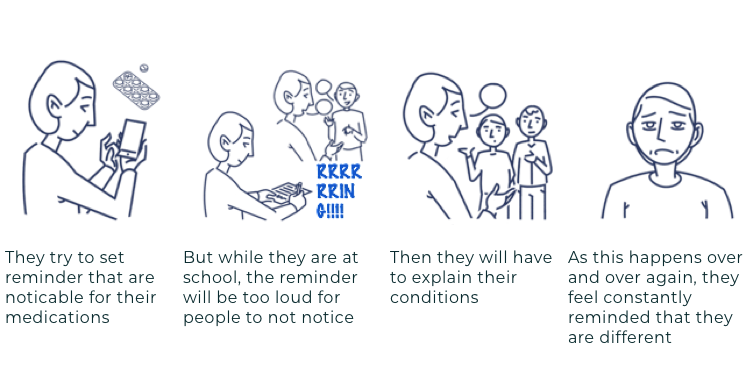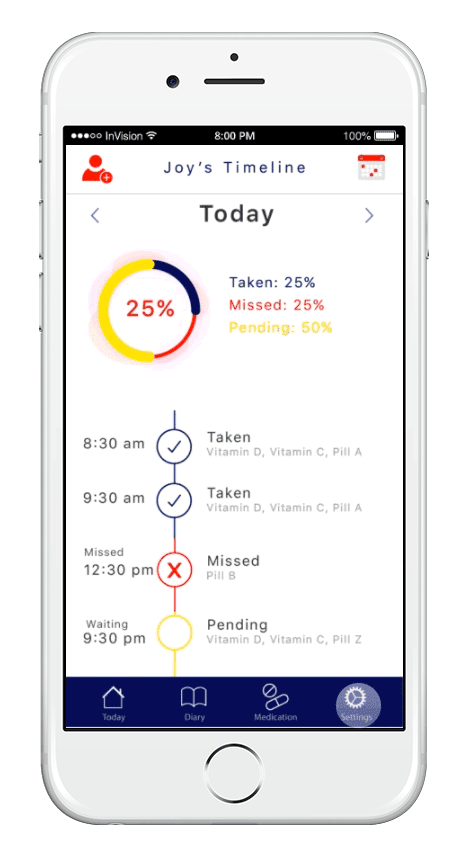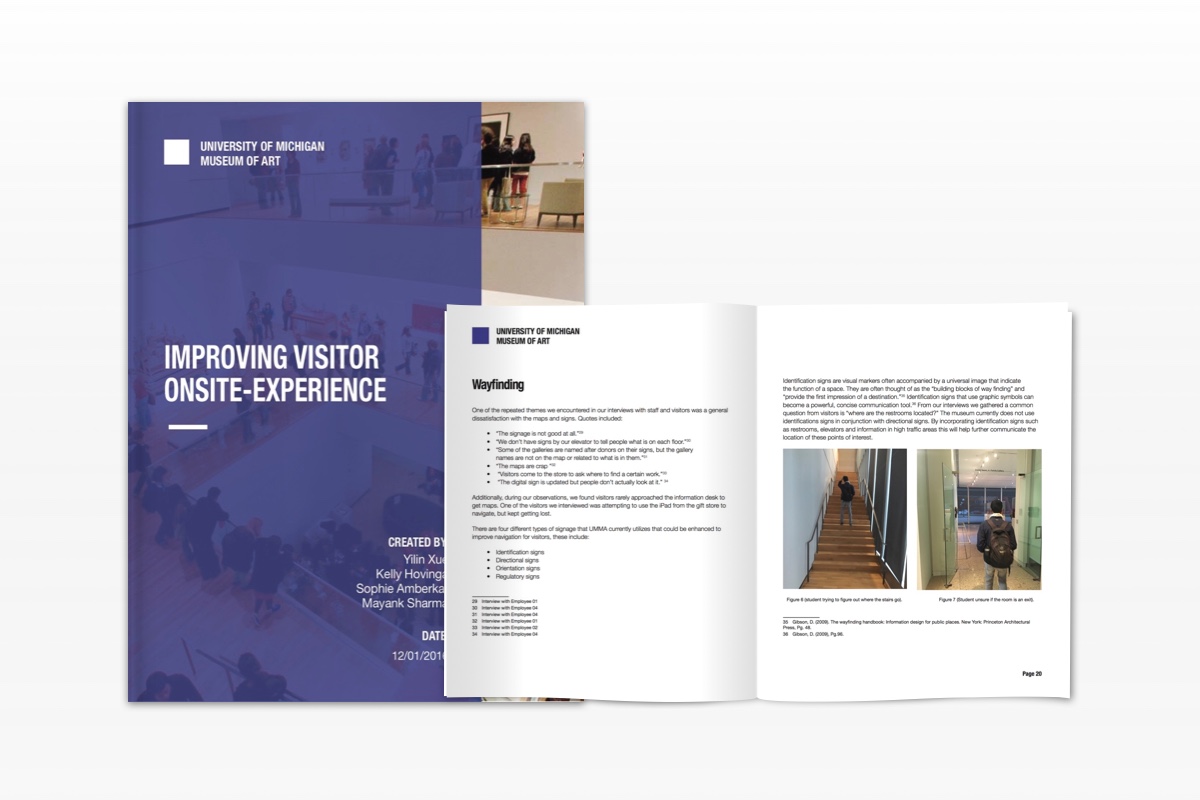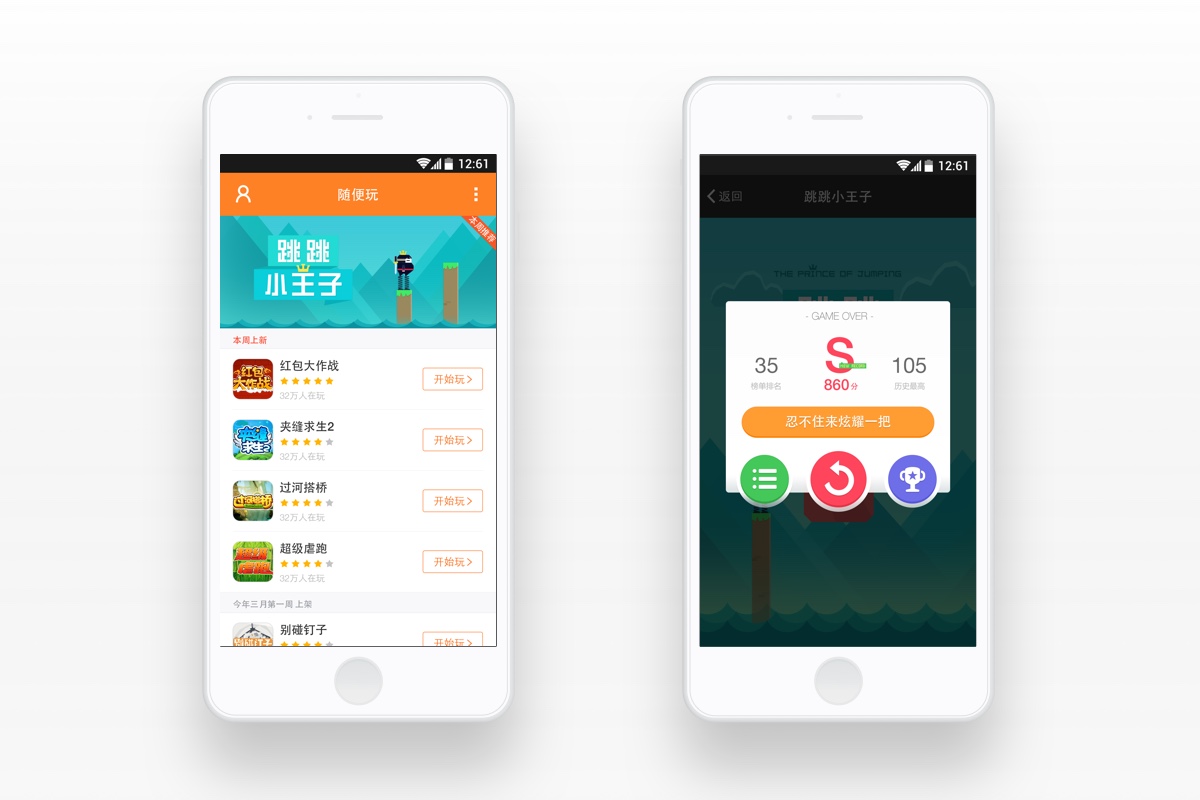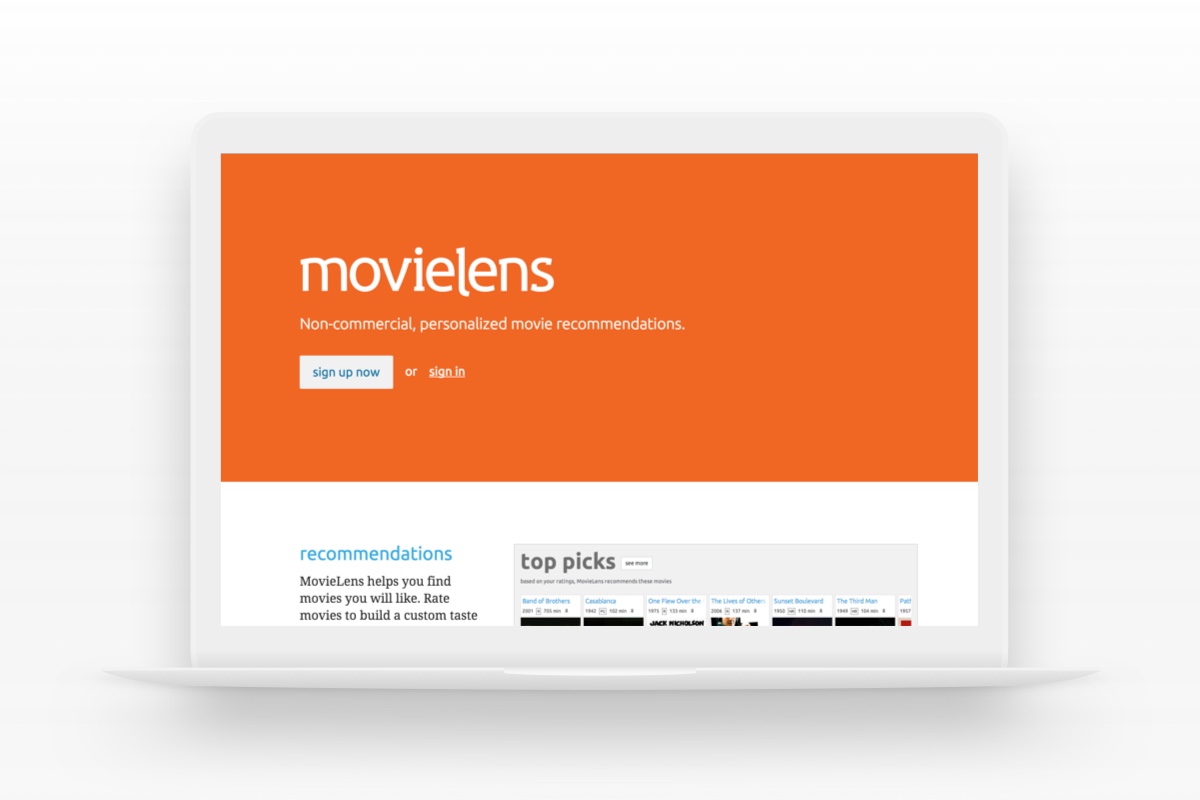Inspiration
2nd brain was a project initiated by Joy (alias), a long time patient of the founder of our client, who suffers from multiple chronic conditions since a very young age. She wishes for a solution that can help her better manage her complex medication schedule and monitor her ever changing health conditions.
"Chronic illness is not something that will magically disappear, I quickly realized that taking medications and going to doctors will become part of my lifestyle."
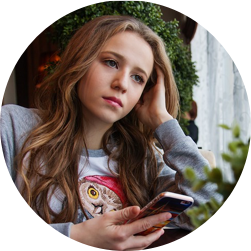
In fact, she was not a single case, a study by NIH in 1991 estimated that 31.5% of US adolescents have at least one or more chronic conditions, this includes allergies, asthma, and depressions.
Goal
Design an app that help people like Joy to manage their complex medication needs and improve medication adherence in an unobtrusive way.



